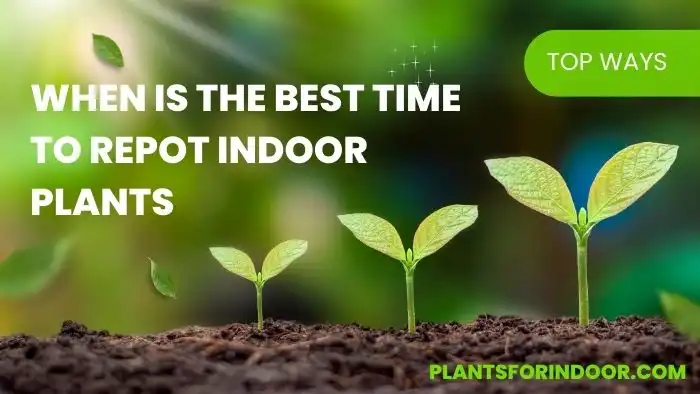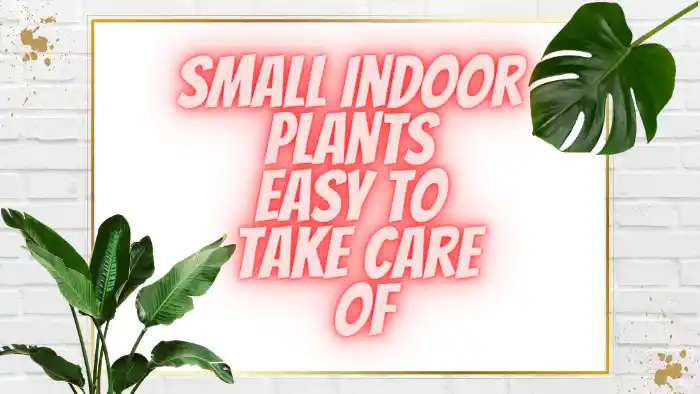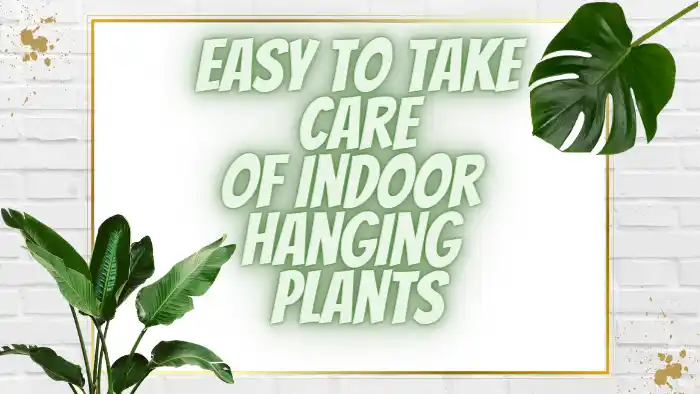Proper care is important for indoor plants to stay healthy. One important aspect of care is repotting, which means moving a plant to a bigger container so it has more room to grow.
The best time to repot indoor plants is in the spring or early summer when they are growing the most.
This gives them the best chance to recover quickly from being repotted. It’s also important to pick a day that isn’t too hot or cold because extreme temperatures can stress the plant. However, not all plants need to be repotted regularly.
Slow-growing plants like cacti may only need to be repotted every two to four years, while faster-growing plants may need to be repotted every year or even every six months.
You should look for signs that a plant needs to be repotted, like roots coming out of the holes or the plant getting too heavy. Repotting at the right time helps indoor plants grow well and look nice.
Understanding the Need to Repot Indoor Plants
Indoor plants need care and attention to thrive. Repotting is a vital fragment of plant care.
It involves moving a plant to a bigger container when it becomes too big for its current one or when the soil lacks nutrients.
There are signs that show when a plant needs to be repotted. One obvious sign is when the roots start growing out of the pot.
This means the plant needs more space for its roots to grow. Another sign is when the soil dries out too fast, which means the plant’s roots need more space to absorb water and nutrients.
Not all plants need to be repotted at the same time. Some plants, like succulents, only need to be repotted every few years because they like having tight roots.
Other plants, like ferns, may need to be repotted every year. To know when to repot, it’s important to research the needs of each plant.
When repotting, choose a slightly bigger container than the current one. This gives the plant space to grow while still fitting the roots snugly.
Use a good potting mix that suits the specific plant. Cacti, for example, need a well-draining mix, while ferns prefer a mix that holds moisture.
Pros:
- Repotting indoor plants in early spring allows them to have a fresh start before the active growth period, optimizing their development and health.
- If you repot your indoor plants at the right time, it can promote better root growth which leads to healthier and more robust plants.
- When you repot at the best time, it helps to prevent root-bound plants which could lead to stunted growth or even plant death.
- The best time to repot allows for adjustments in the size of pots and soil quality, ensuring that your plant gets the nutrients it needs.
- By repotting indoor plants when necessary, it helps prevent diseases caused by overwatering or poor drainage as new pots often have better drainage facilities.
Cons:
- If you repot at an incorrect time for the specific species of plant, it may lead to shock and hindered growth due to disrupted metabolic processes.
- Plants may get damaged during the repotting process if not handled with care which could set back their development.
- Some indoor plants prefer being root-bound and thus unnecessary or untimely repotting could be detrimental rather than beneficial.
- Repotting at improper times might coincide with a dormant phase of some plants leading them unable reacting optimally towards new conditions imposed by replanting.
- Finding appropriate pot sizes and good-quality soil all year around can sometimes be challenging which makes timely re-potting difficult.
Identifying the Best Time to Repot Indoor Plants
Knowing the right time to repot indoor plants is crucial. Repotting at the wrong time can harm the plant and cause it to grow poorly or die.
Here are some things to think about when figuring out the best time to repot indoor plants:
Seasonal Considerations
Repot indoor plants in the growing season, from early spring to late summer.
Plants grow and recover faster during this time. Don’t repot in fall and winter when plants are dormant, as it can shock and kill them.
Plant Growth Indicators
To find the best time to repot indoor plants, look for signs of growth. If the roots are coming out of the drainage holes or packed tightly, it’s time to repot.
If the plant is wilting or drooping even with regular watering, it may need repotting.
Also, check the soil. If it stays dry after watering or is consistently wet, it may need fresh soil. Repot during the growing season when plants are actively growing and can recover faster.
Look for signs of growth like roots coming out or wilting. Check the soil for dryness or wetness as well.
How to Repot Indoor Plants
You must repot indoor plants to help them grow well.
Now are the stages to repot indoor plants:
Choosing the Right Pot
When picking a pot, think about the plant’s size. A small pot can stop the plant from growing, and a big pot can make the soil too wet and cause root rot.
Usually, go for a pot that’s one size bigger than the current one. The potting material matters too. Clay pots soak up extra water, while plastic pots keep it in.
Preparing the Plant
Water the plant before repotting to make it easier to remove from the pot. Carefully take the plant out of the pot, being cautious not to harm the roots.
If the roots are tightly packed, gently loosen them to promote new growth. Check the roots for any signs of disease or damage. If you find any damaged or diseased roots, trim them off using clean scissors or pruning shears.
Repotting Process
Put fresh soil in the new pot, leaving space for the plant. Put the plant in the new pot and fill the gaps with soil, pressing down gently to remove air pockets.
Water the plant well and put it in a place with the right light and temperature. Don’t fertilize the plant for a few weeks so it can get used to its new surroundings.
Repotting indoor plants is important for their health and to prevent root rot. By following these steps, anyone can successfully repot their indoor plants.
Post-Repotting Care
After you move an indoor plant to a new pot, you need to take care of it properly so it stays healthy and keeps growing.
Here are a few tips for post-repotting care:
Watering
After you move the plant to a new pot, you may need to water it more often because the new soil can dry out faster.
But be careful not to give it too much water, because that can cause the roots to rot. Keep an eye on the soil’s moisture and change how often you water accordingly.
Light
The plant needs time to adjust to its new pot and soil. Keep it in a place with consistent lighting. Avoid direct sunlight, as it can dry out the soil and damage the leaves.
Fertilizing
Wait a few weeks after repotting before adding fertilizer to the plant. This helps the roots adjust to the new soil and prevents fertilizer burn.
When it’s time to fertilize, use a balanced fertilizer and follow the package instructions.
Pruning
If the plant had too many roots before repotting, it might be helpful to trim it a bit to make new growth happen.
Take off any leaves that are dead or damaged and cut back any stems that are too long. This will help the plant save energy and concentrate on growing new roots.
Monitoring
Watch the plant closely after repotting to make sure it’s doing well. Check for signs of stress like drooping or yellow leaves and adjust care as needed.
If you take good care of it after repotting, the plant should keep growing and doing well in its new pot.
Common Mistakes to Avoid When Repotting Indoor Plants
Repotting indoor plants can be difficult, and people often make common mistakes.
Here are some things to avoid when repotting your indoor plants:
Choosing the Wrong Soil
Many people make a big mistake when they repot their indoor plants. They choose the wrong soil.
It’s important to use the right soil for your plant. For instance, succulents and cacti need soil that drains well, while other plants need soil that holds more moisture.
If you use the wrong soil, your plant can get root rot, which can kill it.
Repotting at the Wrong Time
You should repot your indoor plants when they are growing, usually in the spring or summer.
Repotting during the dormant season can harm your plant and make it difficult for it to recover.
Using the Wrong-Sized Pot
Choosing the correct pot size is important when repotting indoor plants. If the pot is too small, the plant will outgrow it and need to be repotted again.
If the pot is too big, the plant will have trouble growing roots and may get overwatered.
Overwatering After Repotting
When you repot your indoor plant, be cautious when watering it. In large amounts, water can cause root rot and other difficulties.
Not Pruning before Repotting
Before you repot your indoor plant, make sure to cut off any dead or damaged roots.
This will help your plant grow new roots in its new pot and stop any problems from spreading.
By avoiding these mistakes, you can successfully repot your indoor plants and help them thrive in their new homes.
Conclusion
In conclusion, the best time to repot indoor plants is usually in the spring, specifically early to mid-spring.
This is when plants can take advantage of their natural growth cycle and the warmer weather.
During this time, plants are more likely to recover quickly from repotting stress and adjust to their new containers or growing medium.
However, some plants may need to be repotted at different times, like when they have too many roots or show signs of decline.
So, it’s helpful to research each indoor plant’s specific needs to find the best time to repot.
Frequently Asked Questions
When should I repot my indoor plants?
You must repot your indoor plants when they become too big for their pots. Signs that your plant needs repotting include roots growing out of the holes, stunted growth, and the soil drying out too fast.
Can you repot indoor plants any time of the year?
You should repot indoor plants in the spring or early summer. But if needed, you can repot them at any time of the year.
Just avoid repotting in the fall and winter when the plants are dormant.
Should you remove old soil when repotting?
It’s important to remove old soil when repotting indoor plants. Old soil can get packed, blocking drainage and airflow, causing root rot.
How do you repot a plant without killing it?
To repot a plant without harming it, first, gently take it out of its old container. Then, remove any dead or damaged roots and trim excessively long roots.
How often should you repot indoor plants?
How often you should repot indoor plants depends on how fast they grow, the size of their pots, and the quality of the soil.
In general, most indoor plants should be repotted every 1-2 years. However, some plants can go longer without repotting, while others may need to be repotted more often.
Is it better to repot indoor plants in the spring or fall?
It’s best to repot indoor plants in the spring or early summer when they’re growing.
Repotting at this time lets the roots grow into the new soil before the plant becomes dormant in the fall and winter.
If you have to repot your plant in the fall or winter, you can, but it’s better to avoid doing it during the dormant season.
I am a Horticulture graduate and passionate gardener with expertise in identifying, growing, and caring for plants, trees, and seeds. With a focus on sustainable practices, they aim to promote environmental awareness and appreciation for the natural world.








